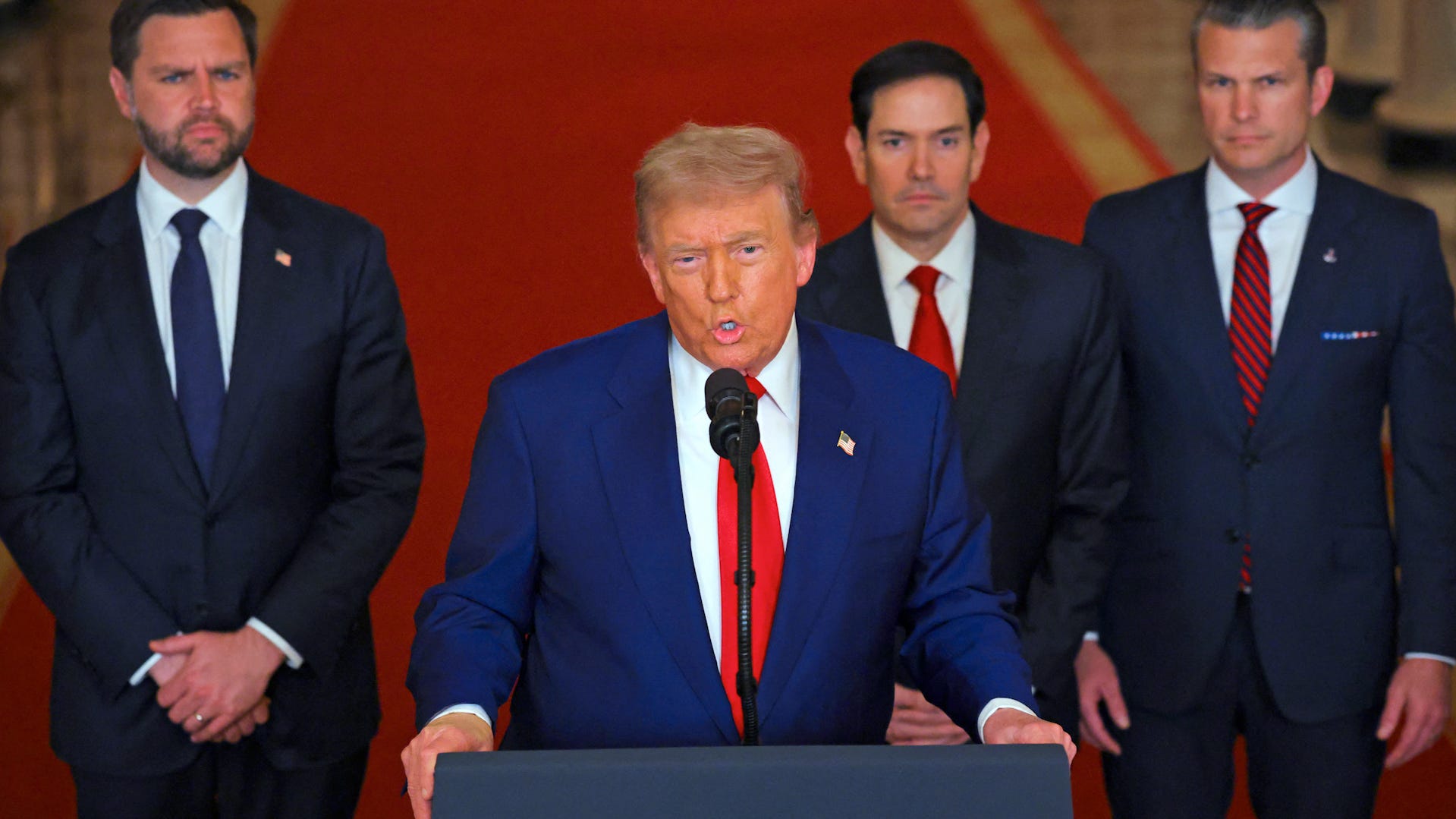Trump says Iran's nuclear sites were 'obliterated.' Were they?
While that may be the case, an independent assessment of Iran's nuclear sites by the International Atomic Energy Agency has not occurred.

WASHINGTON — President Donald Trump and his defense chief say American warplanes completely "obliterated" Iran's three major nuclear complexes at Fordow, Natanz and Isfahan using bunker-busting bombs that have the ability to penetrate underground targets.
While that may be the case, there has so far been no independent assessment of that assertion from nuclear watchdogs, international officials or others with direct information of the situation on the ground. And other U.S. officials have not used such definitive rhetoric.
"Final battle damage will take some time, but initial battle damage assessments indicate that all three sites sustained extremely severe damage and destruction," Joint Chiefs of Staff Chairman Dan Caine told reporters a day after the strikes on June 22.
The International Atomic Energy Agency, which is the main agency that assesses the scale and evolution of Iran's nuclear program, said hostilities would need to cease for it to resume inspections. The organization, housed within the United Nations, said it would hold an emergency meeting June 23.
Trump said Iran's nuclear sites were obliterated
It was not entirely clear what evidence or intelligence Trump was relying on when he told the world that Iran's nuclear enrichment capacity had been destroyed. He also disputed twice-disputed intelligence community findings before the strike that Iran was not close to producing a nuclear weapon.
"Tonight, I can report to the world that the strikes were a spectacular military success," Trump said in a late-night June 21 address. "Iran’s key nuclear enrichment facilities have been completely and totally obliterated."
Hegseth used similar rhetoric at a morning news conference, saying that thanks to Trump's leadership, "Iran's nuclear ambitions have been obliterated."
But a battle damage assessment is ongoing, Hegseth acknowledged during in the briefing. He noted it was the Pentagon's "initial assessment" its precision munitions had the desired effect.
"Especially in Fordow, which was the primary target here. We believe we achieved destruction of capabilities there," Hegseth told reporters.
Caine was more cautious. "It would be way too early for me to comment on what may or may not still be there," he said when asked about Iran's remaining nuclear capabilities during the same news conference.
How much of a hit did Iran take?
It was a "responsible" comment from Caine, said Simone Ledeen, the deputy assistant secretary of defense for the Middle East in Trump's first administration.
Whether the Iranian nuclear program was set back a decade or decades and whether there is no more nuclear program period "really needs to be determined by a systematic battle damage assessment," she said.
Yet, given what the president and secretary of defense know of the bombs that were dropped and where, Ledeen added, "I don't think it's far-fetched for them to say that these sites were destroyed."
Democratic lawmakers on committees that oversee the military, intelligence community and foreign policy apparatus are pushing for classified briefings to help them reach their own conclusions.
"There is a lot we still don’t know and we need an accurate, factual damage assessment," Senate Armed Services ranking member Jack Reed, D-Rhode Island, said in a statement.
Senate Foreign Relations ranking member Jeanne Shaheen also said in a statement, "We are still waiting to understand the extent to which that action has deterred Iran’s nuclear threat."
"President Trump must now de-escalate tensions with Iran and immediately brief Congress," the New Hampshire Democrat said.
Vice President JD Vance did not specify the extent of the damage to Iran's sites as he made a round of television interviews the morning after the strike.
"But we know that we’ve set the Iranian nuclear program back substantially last night," Vance said on ABC News' "This Week" program. "Whether it’s years or beyond that, we know it’s going to be a very long time before Iran can even build a nuclear weapon if they want to."
Iran claims its uranium stockpiles were evacuated
Iran's IRIB state broadcaster claimed its stockpiles of enriched uranium were "evacuated" from all threes sites prior to the U.S. strikes, another assertion not independently verified.
Russian Security Council deputy chairman of Dmitry Medvedev also said Iran's critical nuclear infrastructure appeared to be unaffected or to have sustained only minor damage.
"The enrichment of nuclear material – and, now we can say it outright, the future production of nuclear weapons – will continue," Medvedev said in a social media thread. "A number of countries are ready to directly supply Iran with their own nuclear warheads."
Russia is an ally of Tehran's, and Medvedev is a previous Russian president.
Israeli forces could try to enter Iran's nuclear sites in a sensitive operation and make a determination for itself and the United States, said Ledeen, the first-term Trump defense official. But an official assessment will have to be conducted by the IAEA, which says it can not go in until the conflict ends, for the international community to accept it.
"I hope it is the end, so IAEA can get their inspectors in there sooner rather than later," Ledeen said. "You also don't want loose material getting into the wrong hands."
Contributing: Kim Hjelmgaard